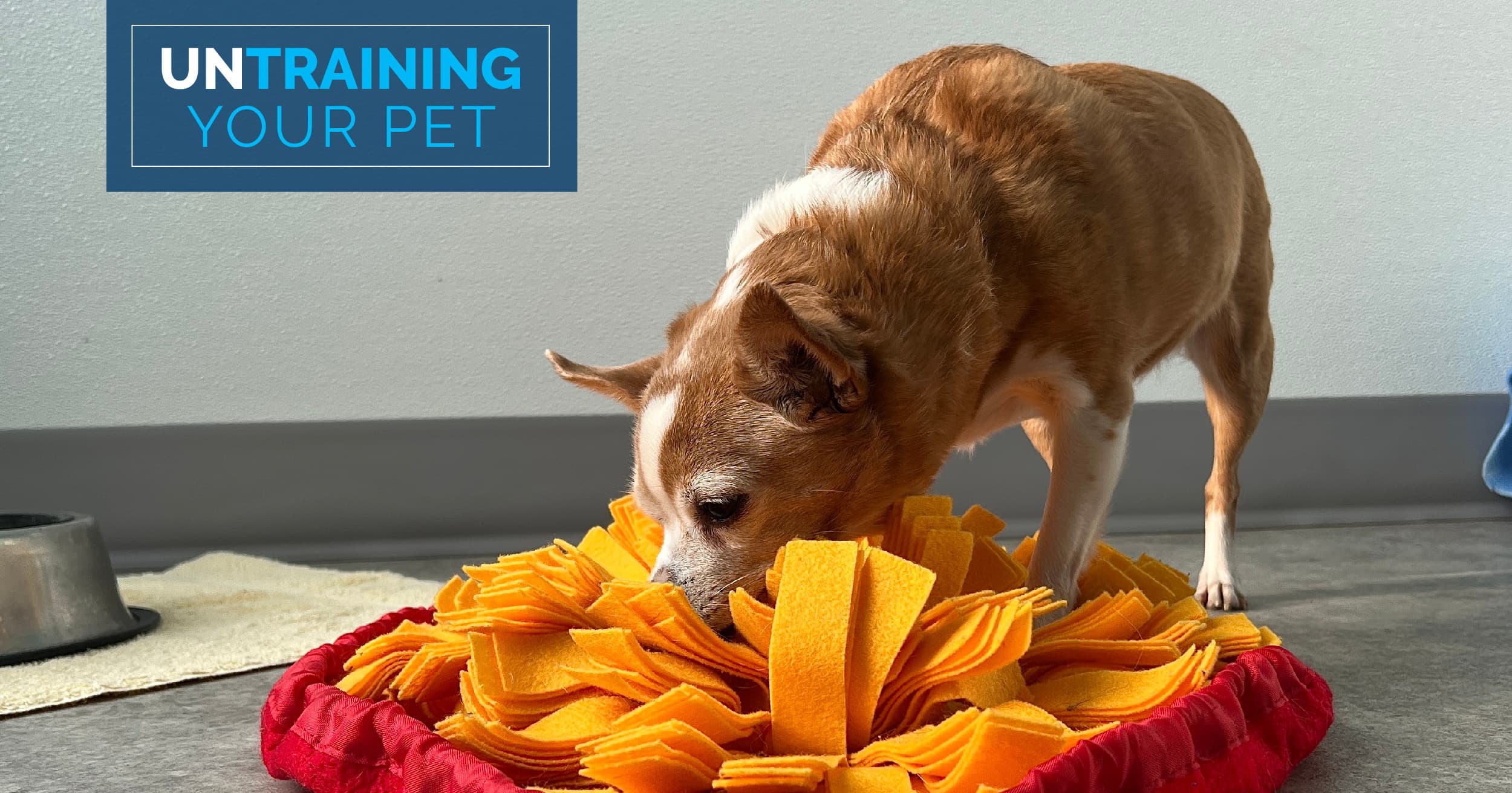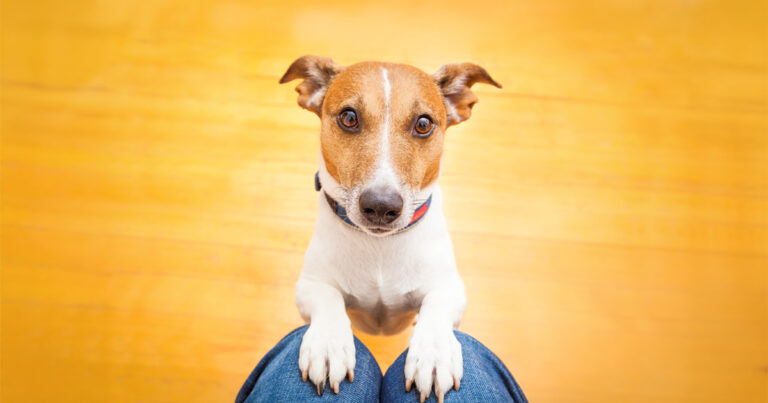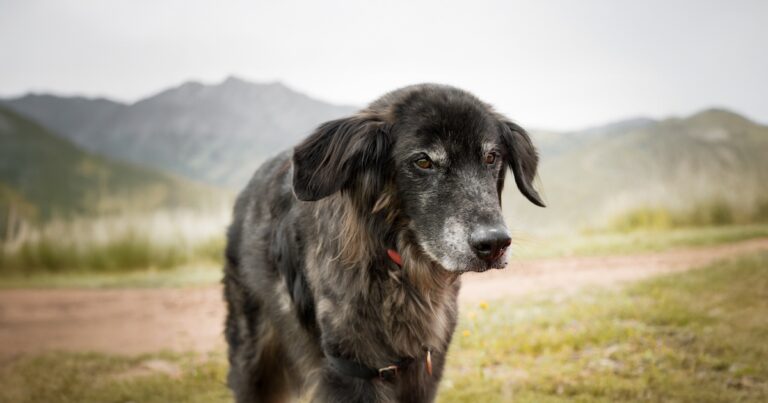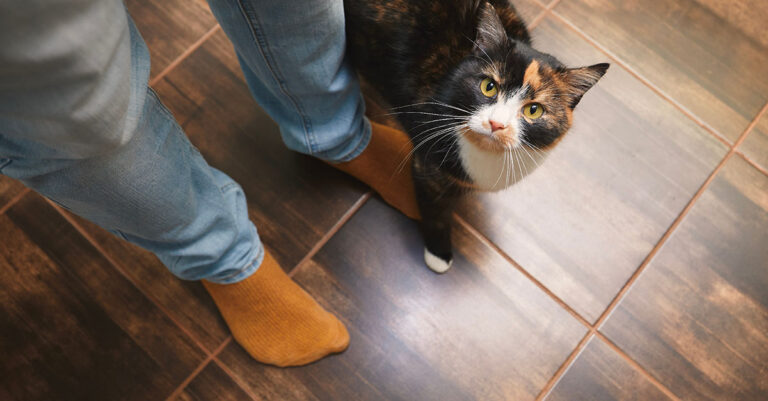Welcome to our “Untraining Your Pet” series, where we help you “untrain” your pet from those naughty or annoying bad habits and get them back to being the goodest boys and girls.
Do you feed your dog and moments later their bowl’s empty? Sounds like you’re living with a food gobbler. Some dogs practically inhale their food, and while they might think it’s an efficient way to eat their food, speed eating can cause health problems for them.
Here are some tips on how to stop it when your dog eats too fast. We also go over why it’s important to train them out of their food-gobbling habit.
What Goes Down Might Come Back Up
Sometimes when a dog eats too fast or guzzles water too quickly, their body says “uh-uh,” and the food or water comes straight back out. This is called regurgitation, and it’s different from vomiting in a number of ways. Regurgitation is the passive emptying of food or water from the esophagus (the muscular tube connecting the mouth and stomach) with little or no warning. Unlike vomiting, there’s no retching or abdominal movement, and it’s usually undigested food with some slimy mucus that comes out. Regurgitation also typically happens soon after eating or drinking.
If your dog regurgitates every now and then, it’s probably nothing to be concerned about. But if they’re regurgitating frequently, it could cause aspiration pneumonia, which is when regurgitated fluid and food is inhaled into their lungs. There are also medical causes of regurgitation, so talk with your veterinarian if your dog regurgitates often.
Gulping Air Is Potentially Deadly
When dogs scarf down their food or water, it’s likely that they swallow a bunch of air along with it. Most of the air comes back out in burps, but trapped air in the stomach can cause bloat, particularly in deep-chested dogs (breeds like Great Dane, Weimaraner, Saint Bernard). Bloat is the everyday name given to two canine stomach disorders: gastric dilatation and gastric dilatation-volvulus (GDV). Gastric dilatation occurs when the stomach fills with gas and expands in size, and GDV occurs when the stomach becomes gas-filled, distended and twisted on itself, resulting in an obstruction.
Gastric dilatation and GDV are medical emergencies and potentially life-threatening. You can read more about the symptoms in our bloat vs. GDV article, but if your dog is pacing, restless, has a hard or bloated abdomen, is dry retching, drooling excessively and has fast or difficult breathing, seek immediate veterinary care.
Think Twice About Refilling That Bowl
If your dog empties their bowl right away, you may think that they’re still hungry and need more food. But if you’re feeding the amount the dog food manufacturer or your veterinarian recommends, that’s probably not the case. Giving your dog more food puts them at risk of developing obesity because they’re consuming more food (calories) than they should.
Some dogs (talking to you, Labrador retrievers) will consume anything you put in front of them, hungry or not. If you stick to your dog’s recommended amount of daily food, they are getting the calories and nutrients they need to stay healthy and probably don’t need a top-up — no matter how much they may beg you for more.
Change Your Feeding Routine
Sometimes the reason dogs hoarf down their food is because they’re afraid someone else is going to eat it. If you have a multi-dog household, is there one dog who likes to finish off everyone else’s food before the others are done with it? Or do the dogs race each other to make sure they don’t miss out on anything? If your dog is an only dog and they were a rescue, it might be a habit left over from their previous life.
You can help reduce this urgency to eat by feeding everyone in separate rooms. Make sure you don’t let them all mingle again until everyone is done eating. It might take them a while to realize they don’t have to worry about their food disappearing, but eventually it may help slow down the food guzzling.
Another feeding routine change that may help is to give your dog smaller meal portions throughout the day. This way they can only eat a small amount at once. Keep in mind that the feeding guidelines on all commercially made pet foods are for the total amount of food to be fed in the entire day. So make sure you divide that amount by the number of meals you feed per day. It’s also important to be consistent and try to feed the same amount of the same food at the same time every day to keep your dog’s digestive system regular.
Make ’Em Work for Their Food
Products like food puzzles, slow feeders and snuffle mats are excellent ways to slow down your dog’s eating habits and have the added bonus of mental stimulation. Food puzzles mean your dog has to work for their food. Some food puzzles are balls that your dog has to roll around to get the food to come out; others are a little more complex and require your dog to flip levers, move something or complete two tasks to find the food.
Snuffle feeding mats are typically made from rubber mats with fabric strips sprouting from them. When kibble is scattered on the mat, your dog has to forage to find individual kibbles. You can even get advanced snuffle mats that have puzzles on them as well.
Slow feeders are less challenging but they do put obstacles in the way of your dog scoffing down their food in one gulp. An advantage of slow feeders is you can use them for dry and wet food. You could also make your own slow feeder using muffin tins or just spread their food out on a cookie sheet.
Some dogs may never be entirely untrained from scoffing down their food. But there are tricks you can use to slow down their gobbling, and keep them healthy, too!
RELATED POST: Untraining Your Pet: Stopping Your Dog from Begging







